Our long run of perfect weather mornings changed, and my string of uninterrupted days photographing in La Jolla came to an end, in mid-December around Christmas. Still, I enjoyed several nice mornings including a few with good flight behavior. Most interesting were two days in which a large bait ball was located over the La Jolla Canyon, attracting an absolutely huge number of mixed seabirds including brown pelicans, Brandt’s and double-crested cormorants, black-ventered shearwaters and various gulls. It would have been great to have had my old boat and gotten a little closer to the action. Birds were constantly coming to the cliffs to rest and then return in waves out to the bait when it reached the surface again. I only managed a few distant photos of the action but I could tell it was furious. A few days later I saw the same action but way north of the pier, off Black’s Beach. I saw a little bit of sea lion bodysurfing but did not manage any good images of it. Here are some of my favorites from mid- and late December. Cheers, and thanks for looking!
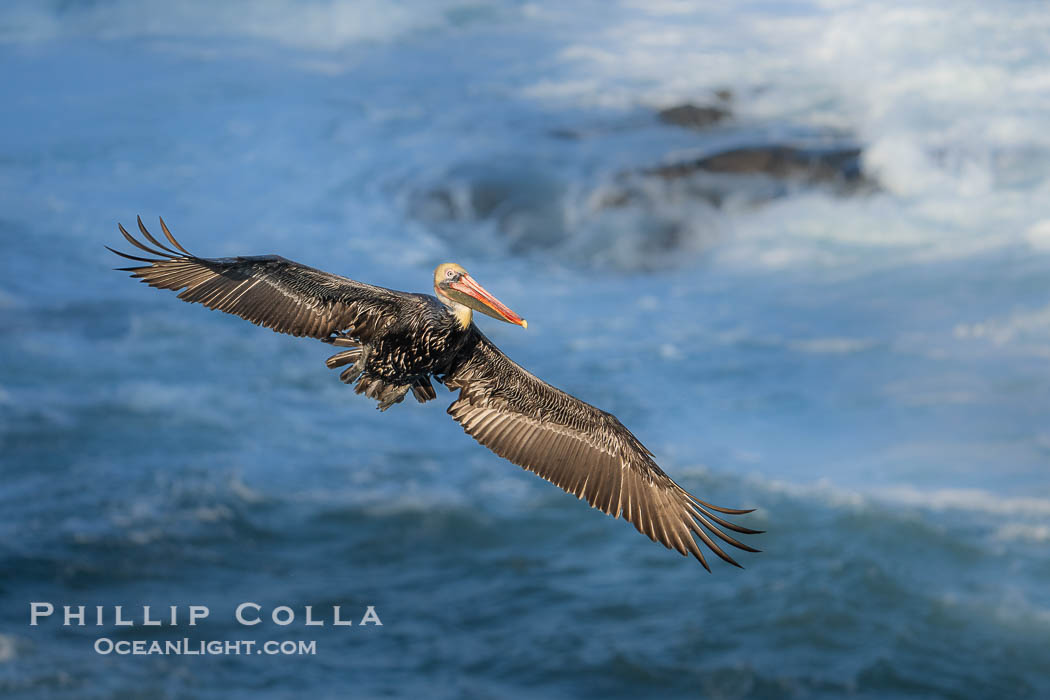
Brown pelican in flight. Adult winter non-breeding plumage. Brown pelicans were formerly an endangered species. In 1972, the United States Environmental Protection Agency banned the use of DDT in part to protect bird species like the brown pelican . Since that time, populations of pelicans have recovered and expanded. The recovery has been so successful that brown pelicans were taken off the endangered species list in 2009.
Image ID: 40011
Species: Brown Pelican, Pelecanus occidentalis, Pelecanus occidentalis californicus
Location: La Jolla, California
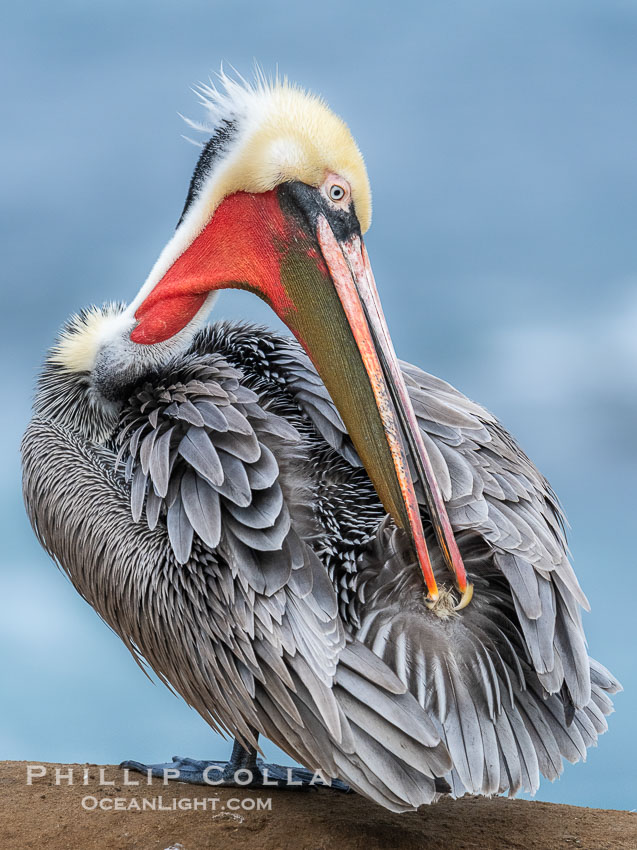
A brown pelican preening, reaching with its beak to the uropygial gland (preen gland) near the base of its tail. Preen oil from the uropygial gland is spread by the pelican's beak and back of its head to all other feathers on the pelican, helping to keep them water resistant and dry. Adult winter breeding plumage.
Image ID: 40020
Species: Brown Pelican, Pelecanus occidentalis, Pelecanus occidentalis californicus
Location: La Jolla, California
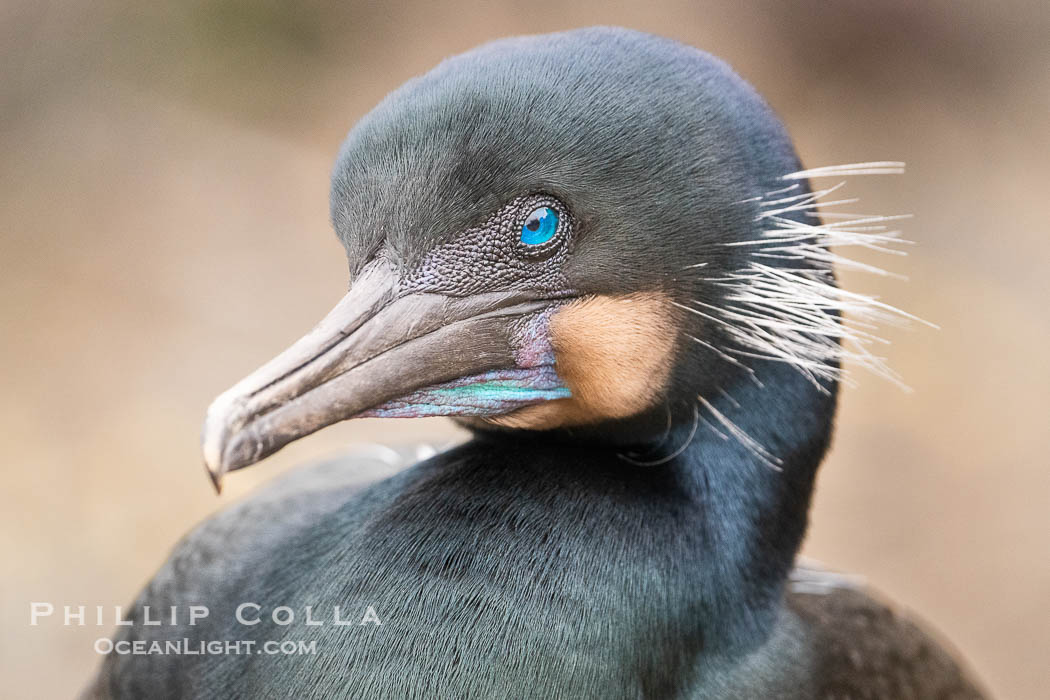
Brandt's Cormorant Portrait with Breeding Plumage, with blue throat and white feathers on each side of the head.
Image ID: 40004
Species: Brandt's Cormorant, Phalacrocorax penicillatus
Location: La Jolla, California
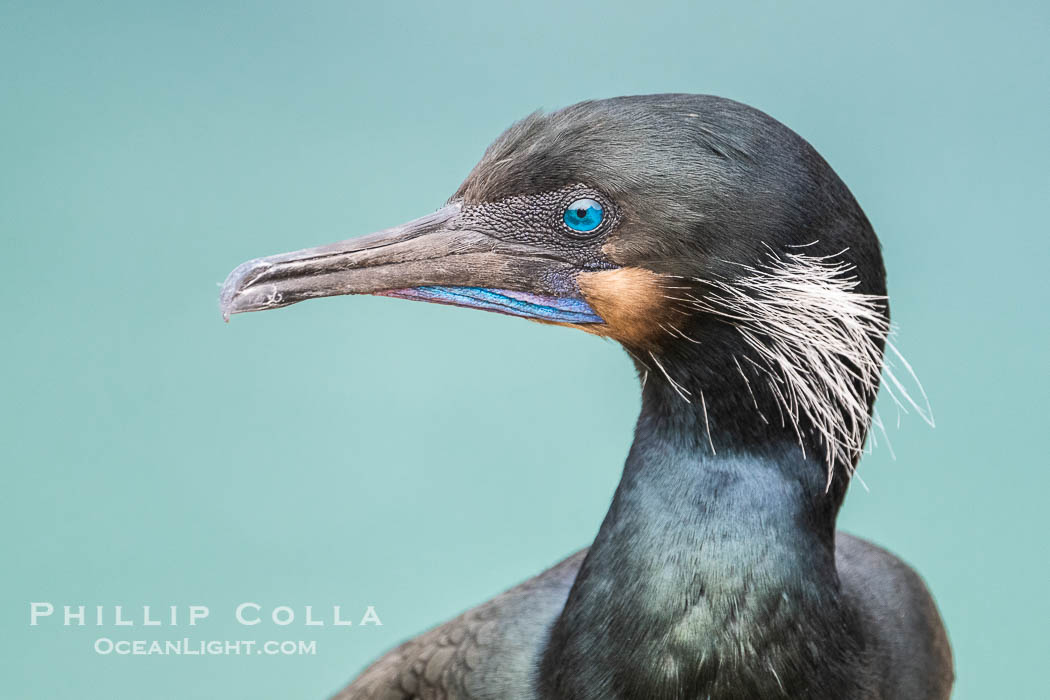
Brandt's Cormorant Portrait with Breeding Plumage, with blue throat and white feathers on each side of the head.
Image ID: 40006
Species: Brandt's Cormorant, Phalacrocorax penicillatus
Location: La Jolla, California
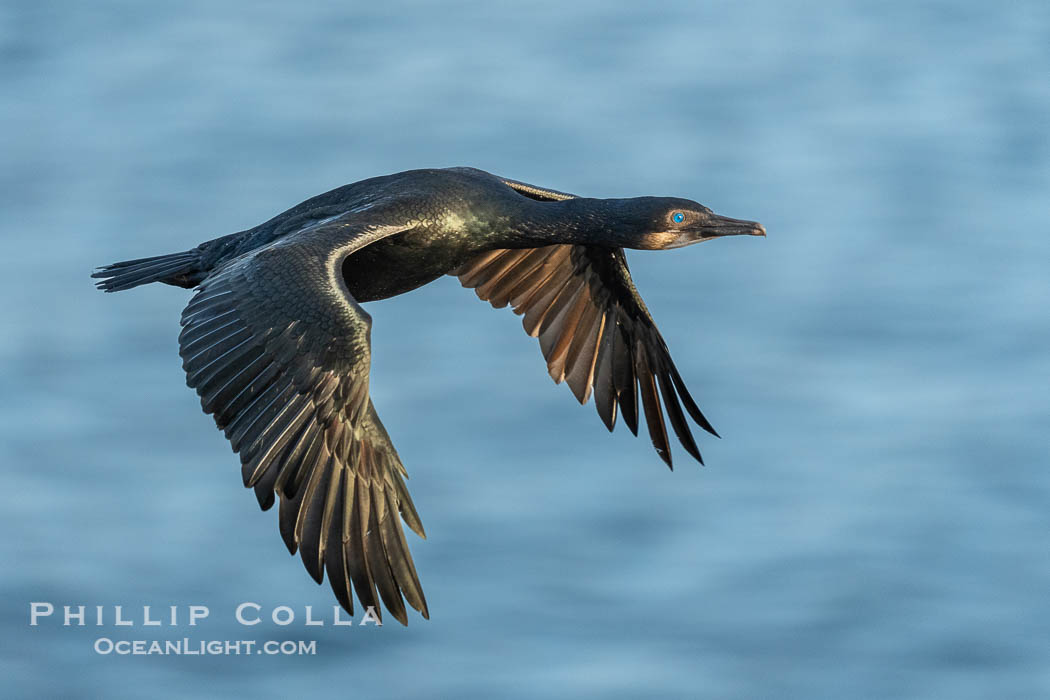
Brandt's cormorant cormorant in flight.
Image ID: 40008
Species: Brandt's Cormorant, Phalacrocorax penicillatus
Location: La Jolla, California
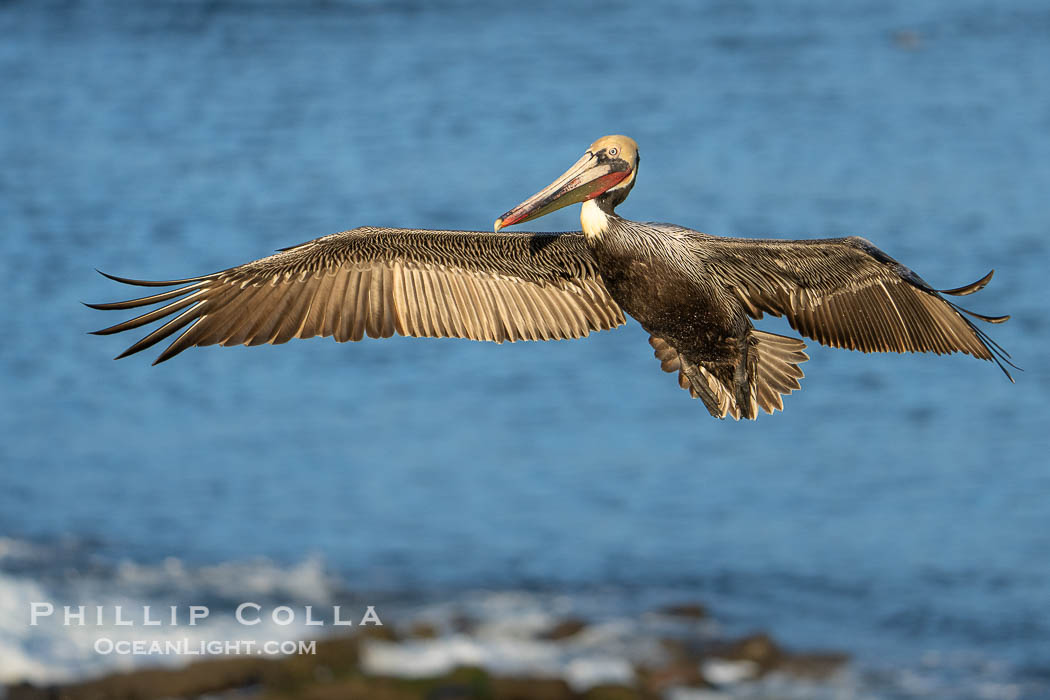
Brown pelican in flight. Adult winter breeding plumage. Brown pelicans were formerly an endangered species. In 1972, the United States Environmental Protection Agency banned the use of DDT in part to protect bird species like the brown pelican . Since that time, populations of pelicans have recovered and expanded. The recovery has been so successful that brown pelicans were taken off the endangered species list in 2009.
Image ID: 40009
Species: Brown Pelican, Pelecanus occidentalis, Pelecanus occidentalis californicus
Location: La Jolla, California
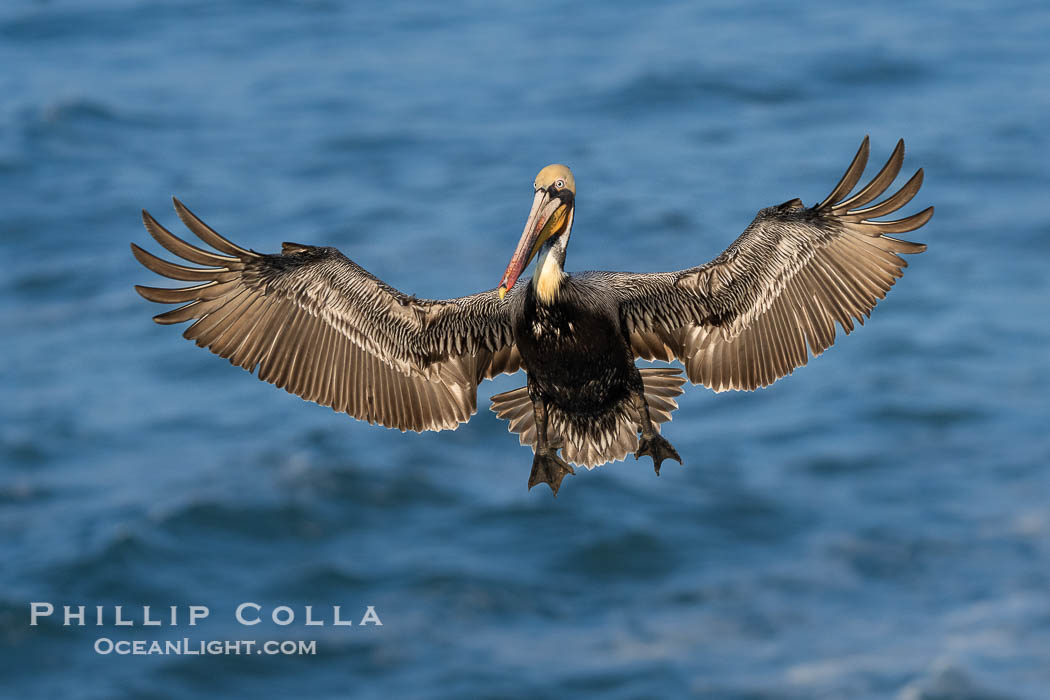
Brown pelican in flight. Adult winter breeding plumage. Brown pelicans were formerly an endangered species. In 1972, the United States Environmental Protection Agency banned the use of DDT in part to protect bird species like the brown pelican . Since that time, populations of pelicans have recovered and expanded. The recovery has been so successful that brown pelicans were taken off the endangered species list in 2009.
Image ID: 40010
Species: Brown Pelican, Pelecanus occidentalis, Pelecanus occidentalis californicus
Location: La Jolla, California

Portrait of a California brown pelican in winter breeding plumage, yellow head, red throat, pink skin around the eye, brown hind neck. Brown pelicans were formerly an endangered species. In 1972, the United States Environmental Protection Agency banned the use of DDT. Since that time, populations of pelicans have recovered and expanded. The recovery has been so successful that brown pelicans were taken off the endangered species list in 2009.
Image ID: 40017
Species: Brown Pelican, Pelecanus occidentalis, Pelecanus occidentalis californicus
Location: La Jolla, California
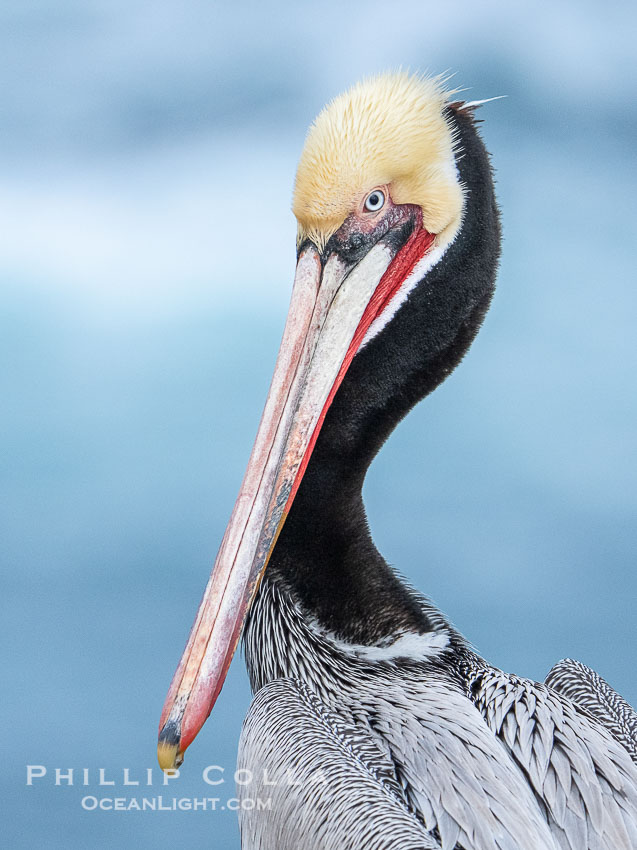
Portrait of a California brown pelican in winter breeding plumage, yellow head, red throat, pink skin around the eye, brown hind neck. Brown pelicans were formerly an endangered species. In 1972, the United States Environmental Protection Agency banned the use of DDT. Since that time, populations of pelicans have recovered and expanded. The recovery has been so successful that brown pelicans were taken off the endangered species list in 2009.
Image ID: 40018
Species: Brown Pelican, Pelecanus occidentalis, Pelecanus occidentalis californicus
Location: La Jolla, California
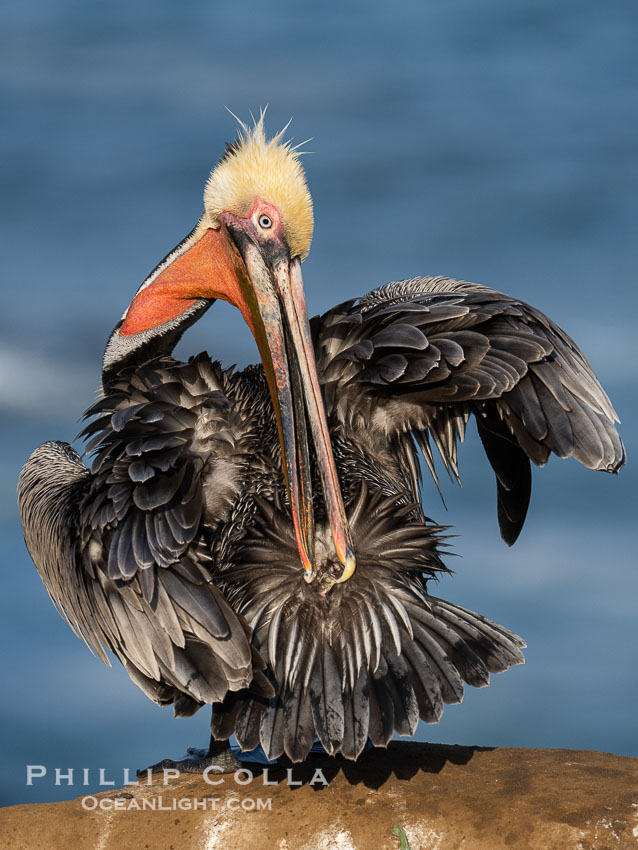
A brown pelican preening, reaching with its beak to the uropygial gland (preen gland) near the base of its tail. Preen oil from the uropygial gland is spread by the pelican's beak and back of its head to all other feathers on the pelican, helping to keep them water resistant and dry. Adult winter breeding plumage.
Image ID: 40019
Species: Brown Pelican, Pelecanus occidentalis, Pelecanus occidentalis californicus
Location: La Jolla, California
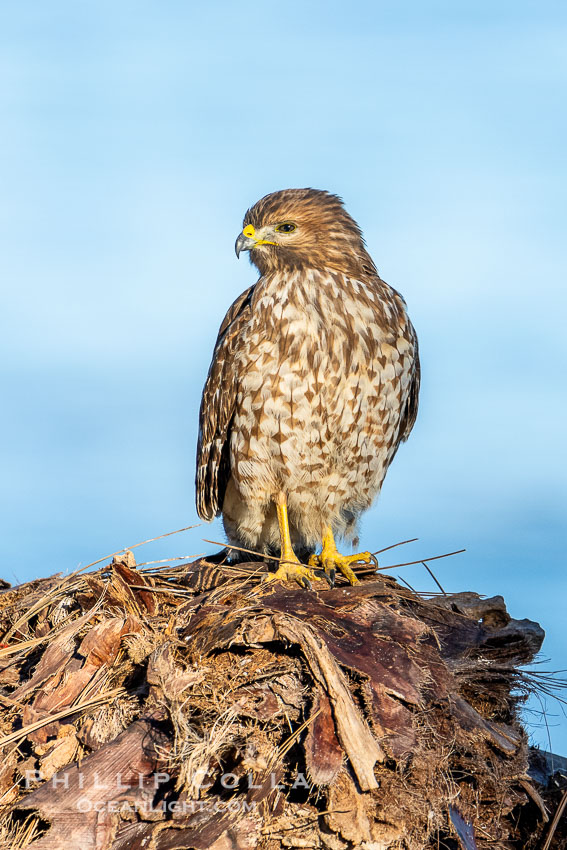
Juvenile Red Shouldered Hawk Buteo lineatus in La Jolla.
Image ID: 39903
Species: Red-Shouldered Hawk, Buteo lineatus
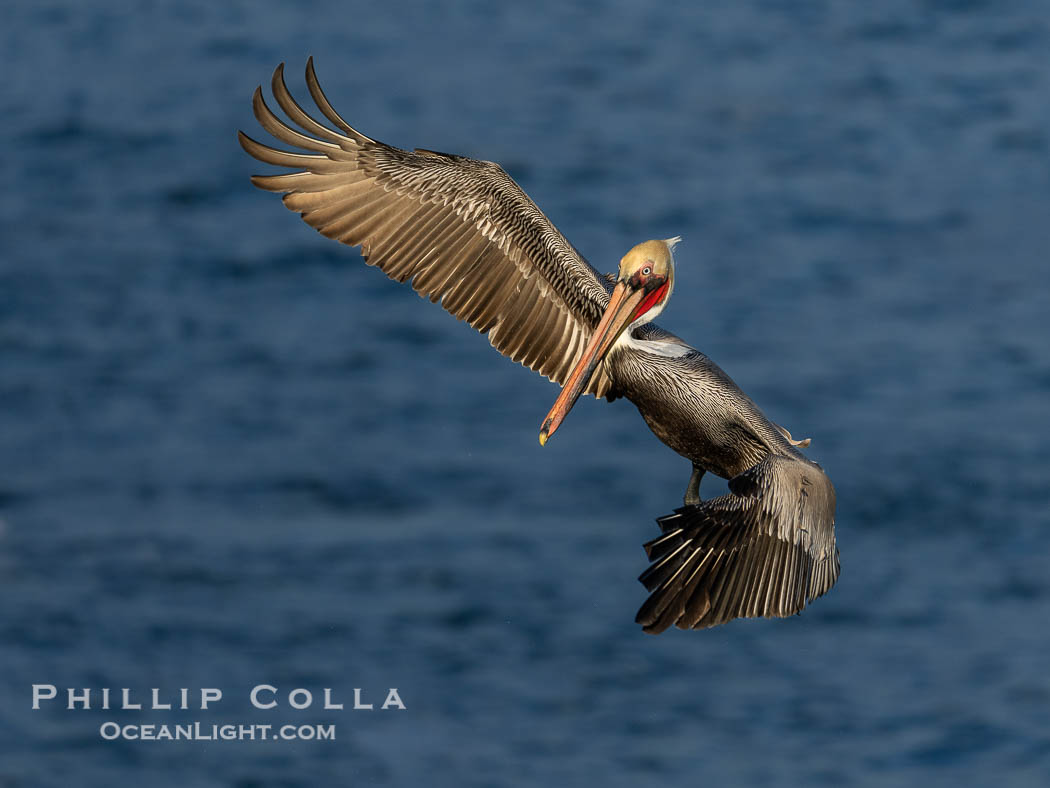
Brown pelican in flight. Adult winter non-breeding plumage. Brown pelicans were formerly an endangered species. In 1972, the United States Environmental Protection Agency banned the use of DDT in part to protect bird species like the brown pelican . Since that time, populations of pelicans have recovered and expanded. The recovery has been so successful that brown pelicans were taken off the endangered species list in 2009.
Image ID: 40012
Species: Brown Pelican, Pelecanus occidentalis, Pelecanus occidentalis californicus
Location: La Jolla, California
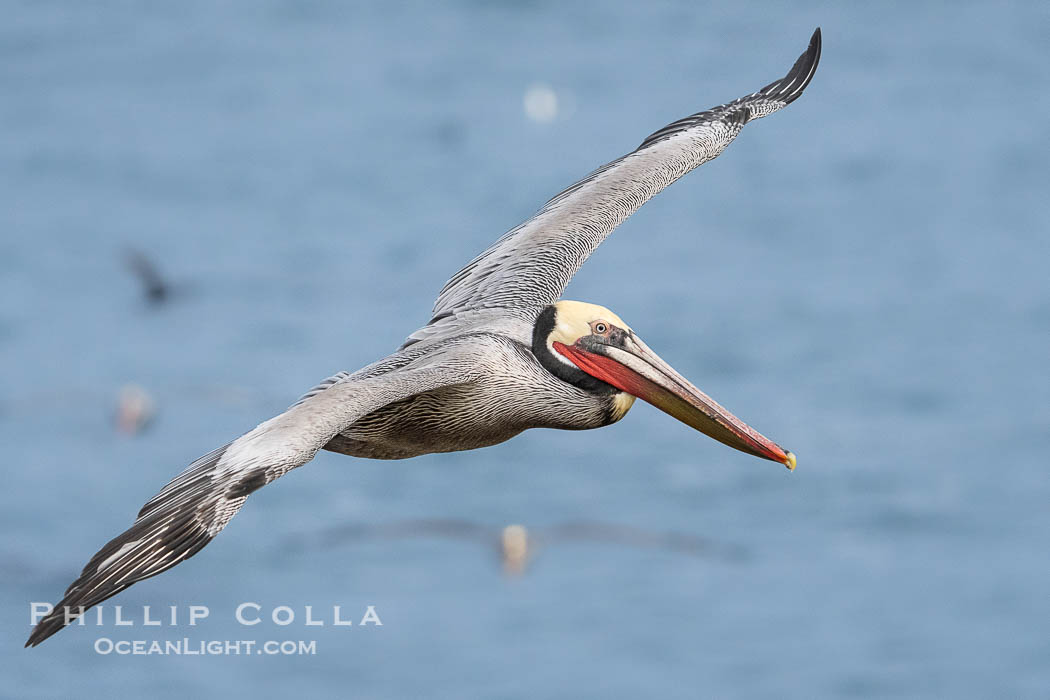
Brown pelican in flight. Adult winter breeding plumage. Brown pelicans were formerly an endangered species. In 1972, the United States Environmental Protection Agency banned the use of DDT in part to protect bird species like the brown pelican . Since that time, populations of pelicans have recovered and expanded. The recovery has been so successful that brown pelicans were taken off the endangered species list in 2009.
Image ID: 40013
Species: Brown Pelican, Pelecanus occidentalis, Pelecanus occidentalis californicus
Location: La Jolla, California
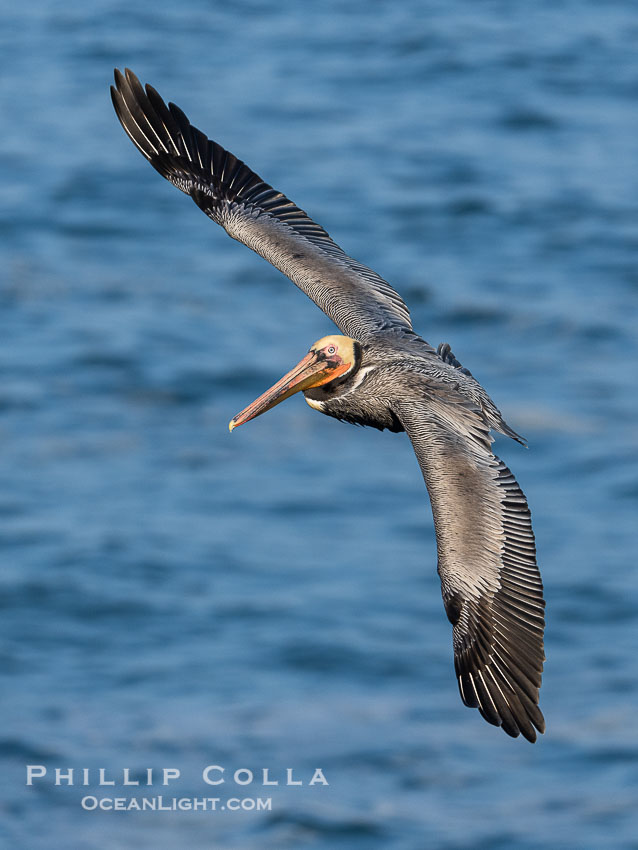
Brown pelican in flight. Adult winter breeding plumage. Brown pelicans were formerly an endangered species. In 1972, the United States Environmental Protection Agency banned the use of DDT in part to protect bird species like the brown pelican . Since that time, populations of pelicans have recovered and expanded. The recovery has been so successful that brown pelicans were taken off the endangered species list in 2009.
Image ID: 40015
Species: Brown Pelican, Pelecanus occidentalis, Pelecanus occidentalis californicus
Location: La Jolla, California
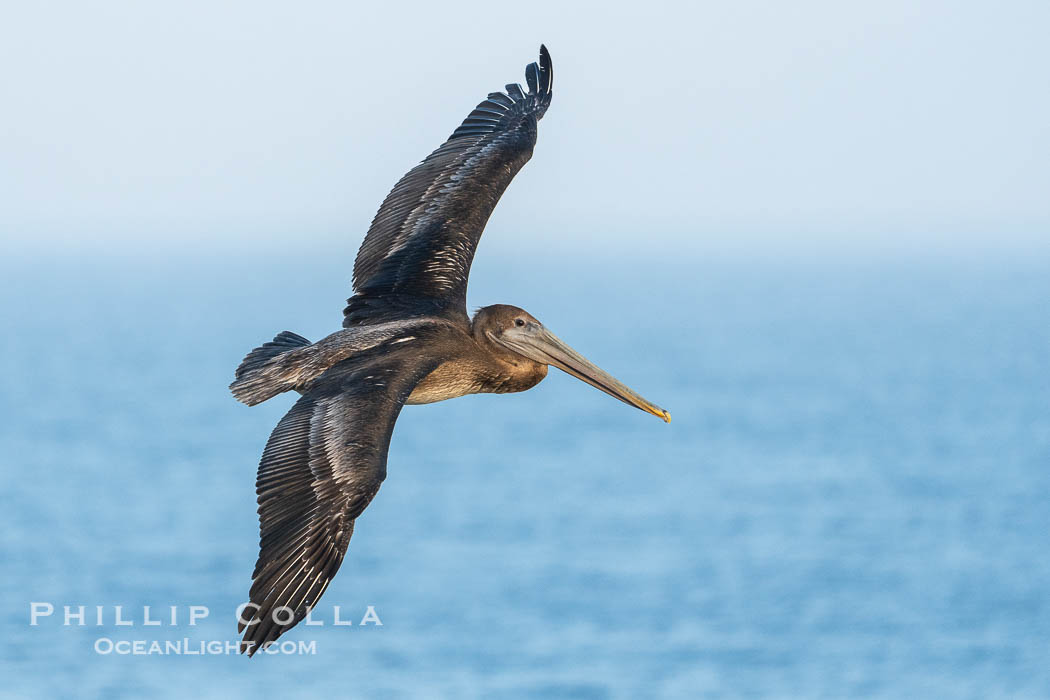
Juvenile Brown pelican in flight. Brown pelicans were formerly an endangered species. In 1972, the United States Environmental Protection Agency banned the use of DDT in part to protect bird species like the brown pelican . Since that time, populations of pelicans have recovered and expanded. The recovery has been so successful that brown pelicans were taken off the endangered species list in 2009.
Image ID: 40016
Species: Brown Pelican, Pelecanus occidentalis, Pelecanus occidentalis californicus
Location: La Jolla, California
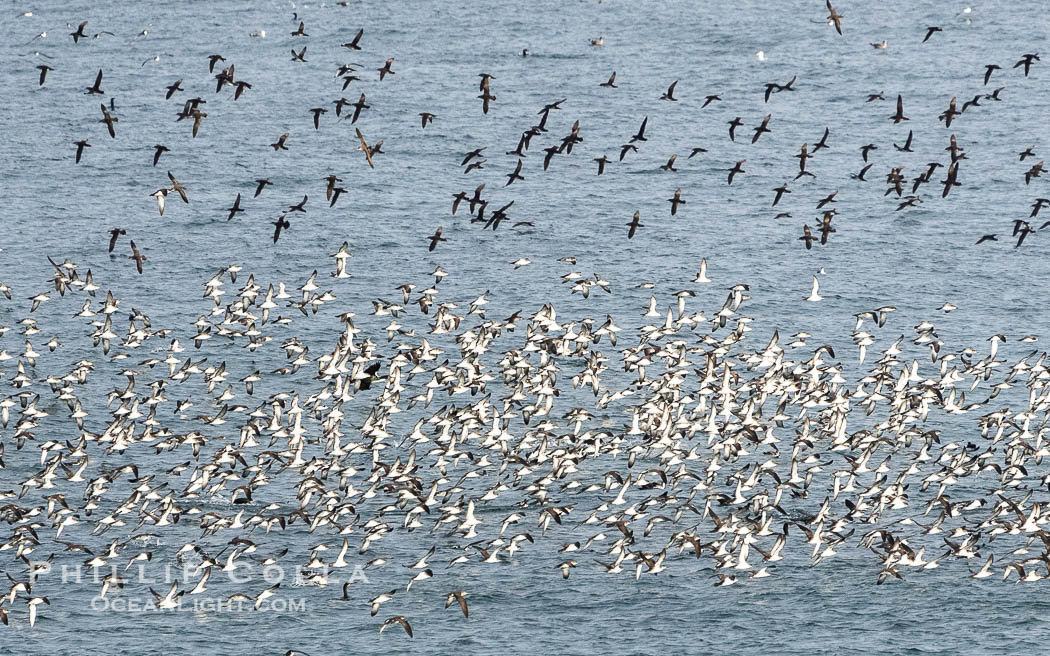
Black-Vented Shearwater Flock over the Ocean, gathered in large numbers to feed on a bait ball near La Jolla.
Image ID: 40021
Location: La Jolla, California
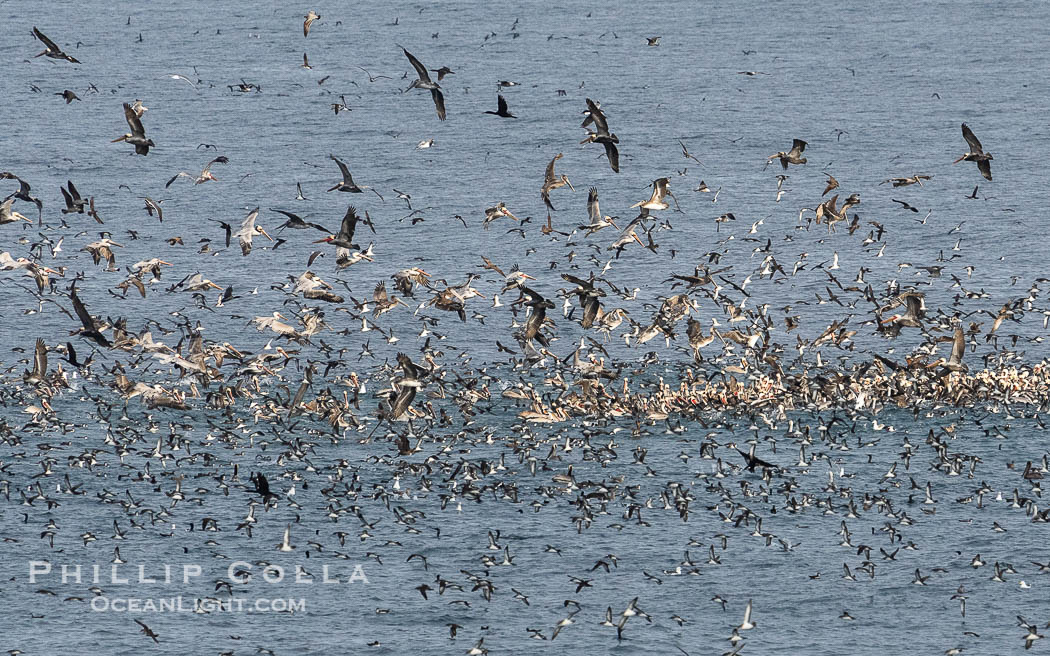
Seabirds gather in enormous numbers to feed on bait ball. Mixed species include brown pelican, black-vented shearwater, various gulls and Brandt's cormorants.
Image ID: 40023
Species: Brown Pelican, Pelecanus occidentalis, Pelecanus occidentalis californicus
Location: La Jolla, California
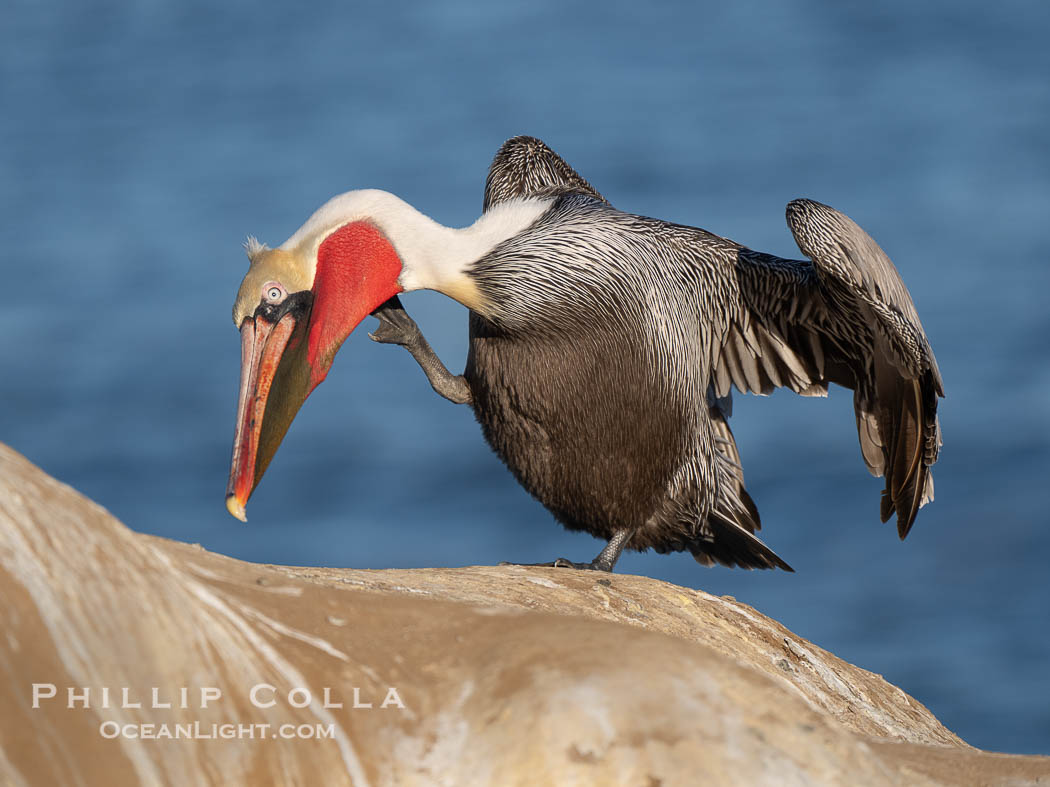
Pelican Practices Yoga Position Warrior Three, Virabhadrasana III, as it scratches its throat and stands on one leg. Brown pelican portrait, scratching throat pouch, displaying winter plumage with distinctive yellow head feathers and red gular throat pouch but not yet displaying the brown hind neck feathers.
Image ID: 39902
Species: Brown Pelican, Pelecanus occidentalis californicus, Pelecanus occidentalis



